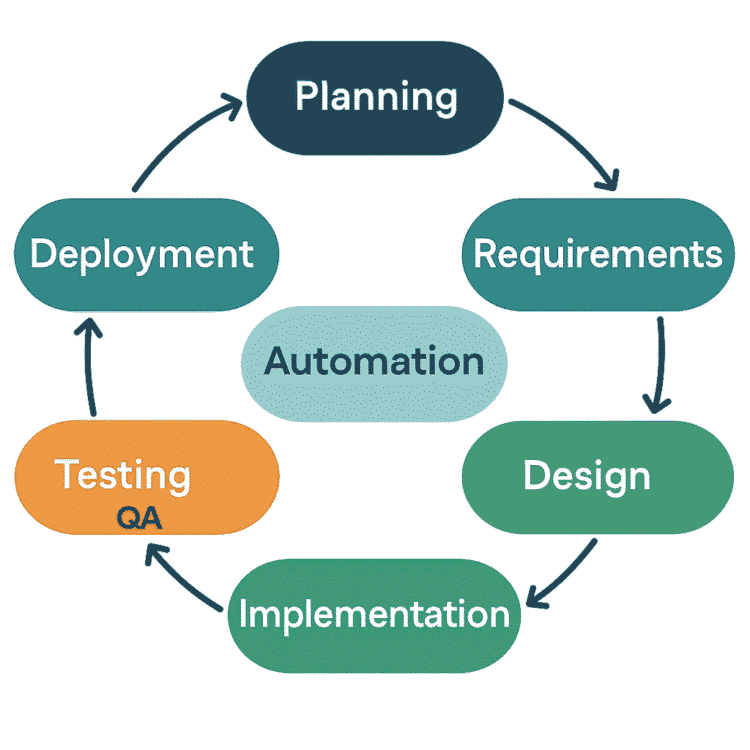Hey, imagine shipping code faster than ever, without constantly worrying about bugs sneaking in. That’s the magic of automation testing in today’s world. With agile teams pushing updates daily and apps getting more complex, manual testing just can’t keep up. It saves time, catches issues early, and lets developers focus on building cool features instead of fixing old ones. If you’re in dev or QA, you know this is essential for reliable, scalable software.
Automation testing is no longer a luxury – it’s a necessity. Modern software teams ship faster, with shorter release cycles and frequent updates. Manual testing can’t keep up — it’s too slow, repetitive, and prone to human error. That’s why automated UI testing has become a core part of the development process. But with so many tools out there, how do you pick the right one? Two heavyweights dominate the conversation: Selenium with Java and Playwright with JavaScript.
Let’s break them down – no fluff, just the facts – so you can decide which one fits your needs.
Diving into Selenium with Java
Selenium is an open-source, supports multiple languages (Java, Python, C#, etc.) and runs across different browsers using WebDriver. It been around for years, mainly for automating web browsers. Think of it as a way to script interactions like clicking buttons or filling forms, all to test your app. With Java, it uses W3C WebDriver protocol that talks directly to browsers. Using Java with Selenium is one of the most common setups in enterprise QA.
Let’s discuss it’s strength and weakness to see how it might fit in your project.
Strengths:
- Mature ecosystem — Over 15 years of community knowledge, libraries, and integrations.
- Multi-language support — Java, Python, C#, Ruby, JavaScript, and more.
- Huge community — Easy to find tutorials, answers, and experienced developers.
- Browser flexibility — Works with almost any browser via WebDriver.
- Integration-friendly — Plays well with TestNG, JUnit, Maven, Jenkins, etc.
Weaknesses:
- Setup complexity — Requires more configuration to get started.
- Slower execution — WebDriver communication can introduce lag.
- Flaky tests — Dynamic elements can cause instability without careful waits.
- No native API testing — Needs additional tools for REST/GraphQL testing.
Best For:
- Large, long-term projects in enterprises.
- Teams with an existing Java codebase.
- Applications that must be tested across many browsers and platforms.
- Cross-browser compatibility checks.
Playwright with JavaScript: The Modern Challenger
Playwright is a newer, fast-growing tool by Microsoft. It’s designed for modern web apps. Playwright focused on reliable end-to-end testing for modern web apps. It lets you automate Chromium, Firefox, and Web Kit browsers with a clean API, and in JavaScript (or TypeScript), it’s super intuitive for front-end folks.
Strengths:
- Fast execution — Direct browser control without the WebDriver middle layer.
- Auto-waiting — Waits for elements to be ready before actions.
- Cross-browser, cross-platform — Works with Chromium, Firefox, and WebKit; supports mobile emulation.
- Built-in API testing — Can test APIs and UI in the same run.
- Easy parallelization — Runs tests in multiple browser contexts quickly.
- Simple setup — Install via npm and start coding in minutes.
Weaknesses:
- Younger ecosystem — Smaller community compared to Selenium.
- Limited language maturity — Supports Java, Python, C#, but JavaScript/TypeScript are the most stable.
- Fewer legacy integrations — Not as many out-of-the-box enterprise connectors.
Best For:
- Modern web apps, especially SPAs (React, Angular, Vue).
- Teams working primarily with JavaScript/TypeScript.
- Projects that need fast, stable execution.
Side-by-Side Comparison: Selenium (Java) vs. Playwright (JavaScript)
Here’s a quick table to break it down. I pulled this from real-world benchmarks and docs—keep in mind, your mileage may vary based on setup.
| Feature | Selenium (Java) | Playwright (JavaScript) |
|---|---|---|
| Language Support | Java, Python, C#, Ruby, JavaScript, Kotlin | JavaScript, TypeScript, Python, Java, C# |
| Browser Coverage | Chrome, Firefox, Edge, Safari, IE (legacy) | Chromium, Firefox, WebKit (covers Safari) |
| Speed | Moderate | Fast |
| Ease of Setup | Moderate to complex | Easy |
| Parallel Execution | Requires extra setup (e.g., Grid) | Built-in |
| Cross-Platform | Yes | Yes |
| Debugging | Relies on third-party tools | Built-in trace viewer, screenshots, videos |
| Community Support | Very large, mature | Growing, smaller than Selenium |
When to Pick Selenium vs. Playwright
Choosing boils down to your team’s setup and project vibe.
Go with Selenium if:
- Your codebase is Java-heavy and you have existing scripts.
- You need broad language flexibility or legacy browser support.
- Community resources are key for custom integrations.
Choose Playwright when:
- Speed and flakiness are pain points in modern JS apps.
- You want built-in features like auto-waits without extra code.
- Your team is comfy in Node.js and values quick iterations.
- You need built-in parallel execution and advanced debugging.
Hybrid approaches work too—start with Playwright for new projects while migrating old Selenium suites.
How AI Supercharges Both Tools
AI is flipping automation testing on its head, making tools like Selenium and Playwright even smarter. No more endless maintenance; AI handles the grunt work.
- Self-Healing Tests: UI changes break locators? AI detects shifts and auto-fixes them. For Selenium, plugins use ML to adapt scripts, cutting maintenance by up to 60%. Playwright pairs with AI models like Groq for dynamic element detection.
- AI-Powered Test Case Generation: Feed in requirements or app screenshots, and AI spits out ready scripts. Tools generate Selenium Java code from natural language, or Playwright JS tests for edge cases, speeding creation by hours.
- Smarter Debugging: AI analyzes failures, spots patterns, and suggests fixes. In Selenium, it pinpoints root causes via logs; for Playwright, integrated viewers get AI boosts to replay and diagnose flakiness faster.
Overall, AI makes both tools more robust—expect even tighter integrations by 2026.
Final Takeaway: How to Decide?
Ask yourself:
- What’s your team’s language preference? (Java → Selenium, JS → Playwright)
- Do you need legacy browser support? (Yes → Selenium)
- Is speed and reliability a priority? (Yes → Playwright)
- Do you need built-in parallel testing? (Playwright wins)
Both are great—Selenium for stability, Playwright for speed. Test both in a small project, factor in AI add-ons, and you’ll land on the right fit. Automation’s evolving—Pick the one that aligns with your tech stack and testing needs.
Which one are you using? Let me know in the comments! 🚀


